In Yokohama, birthplace of ThinkPad, Lenovo is rethinking the business laptop’s future | Technology News
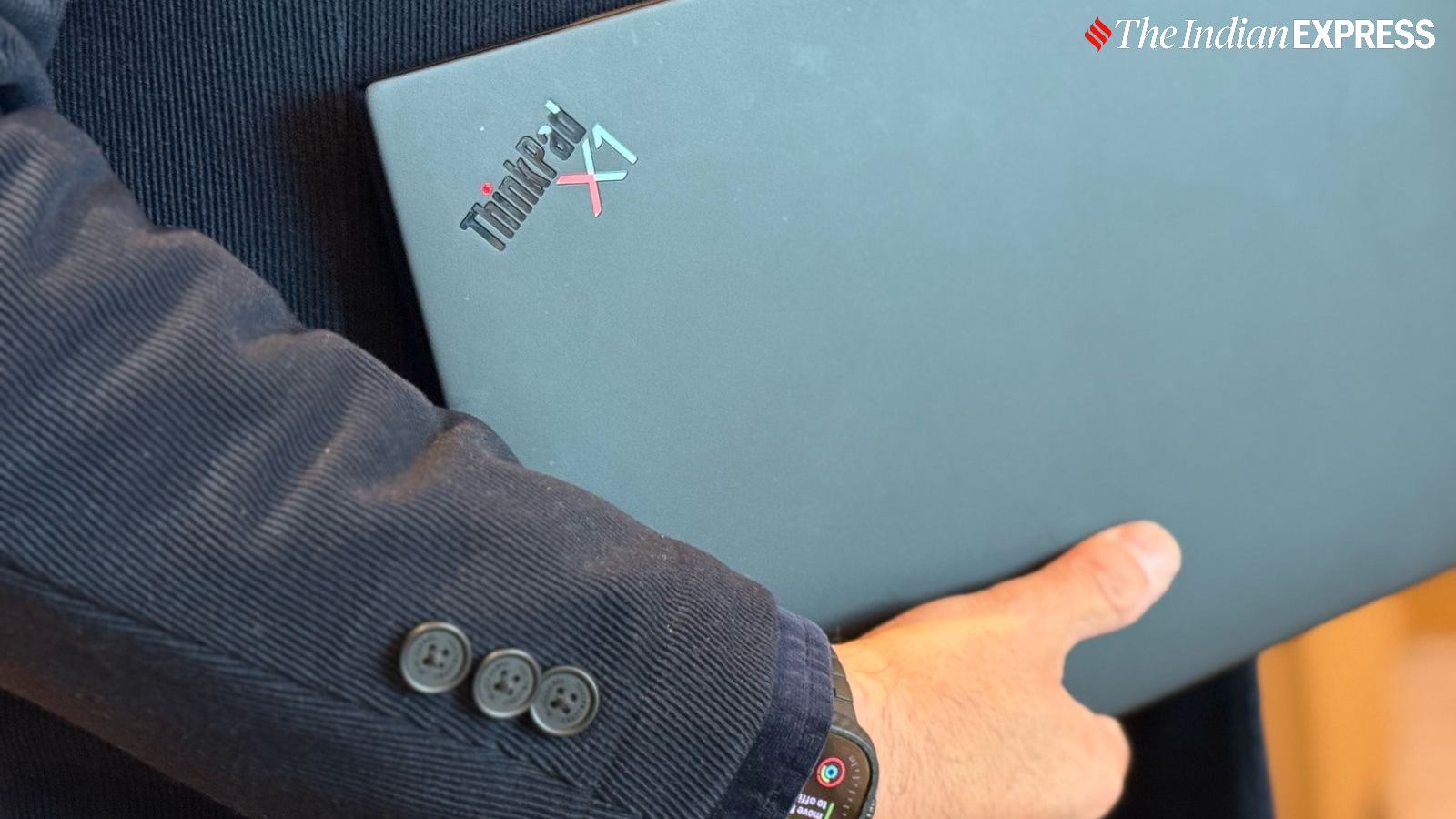
About 24 miles southwest of Tokyo lies Yokohama, Japan’s second-most populous city. Its origins date back to 1849, when it was a sleepy village of around 100 homes, with its inhabitants making a living as fishermen. Today, Yokohama has a population of over 3.6 million and offers an international atmosphere, having long served as a gateway connecting Japan to the rest of the world through foreign trade since its opening as a port. It is also home to Lenovo’s Yamato Lab, the hub of ThinkPad design since its origins with IBM in the 1980s, alongside many other R&D centers from the world’s leading tech companies.
Formerly located in Yamato City and relocated to Yokohama in 2011, Yamato Lab has played a key role in ThinkPad development, dating back to the IBM era, the original ThinkPad 700C, and many other iconic ThinkPad computers over the years. It was Arimasa Naitoh, the father of ThinkPad, who joined IBM in the 1970s, received a call to spearhead a new portable computing venture in IBM’s research center in Yokohama, Japan. At the time, he was based in White Plains, NY but moved back to Japan to develop the iconic ThinkPad line of portable computers.
Lenovo inherited the lab after acquiring IBM’s PC business in 2005, and the world’s largest PC maker still uses the Yamato facility as a center for design and for testing the durability of new ThinkPad computers under different conditions.
It’s not just a laptop
The new Lenovo ThinkPad X1 Carbon (Gen 13, Aura Edition). (Image credit: Anuj Bhatia/Indian Express)
The ThinkPad is a business laptop that many see as an emotion. In fact, it’s probably the most famous business laptop of all time. The ThinkPad was born at IBM’s Yamato Lab. It is believed that industrial designers at IBM drew inspiration from the Japanese bento box, which holds various foods in separate compartments. The original ThinkPad had similar dimensions to a bento box, and inside, its internal components were arranged in a similarly compartmentalised manner. Since then, the ThinkPad has been primarily engineered in Japan, which is why its roots remain in Yamato Lab. The latest ThinkPad X1 Carbon Aura Edition, a business laptop weighing less than a kilogram, features a distinct ThinkPad design and retains the iconic red joystick-like nub on the keyboard. It is designed in close collaboration with Intel as part of a multi-year project to bring personal computers with artificial intelligence features, focusing on making the hardware and proprietary software more cohesive.
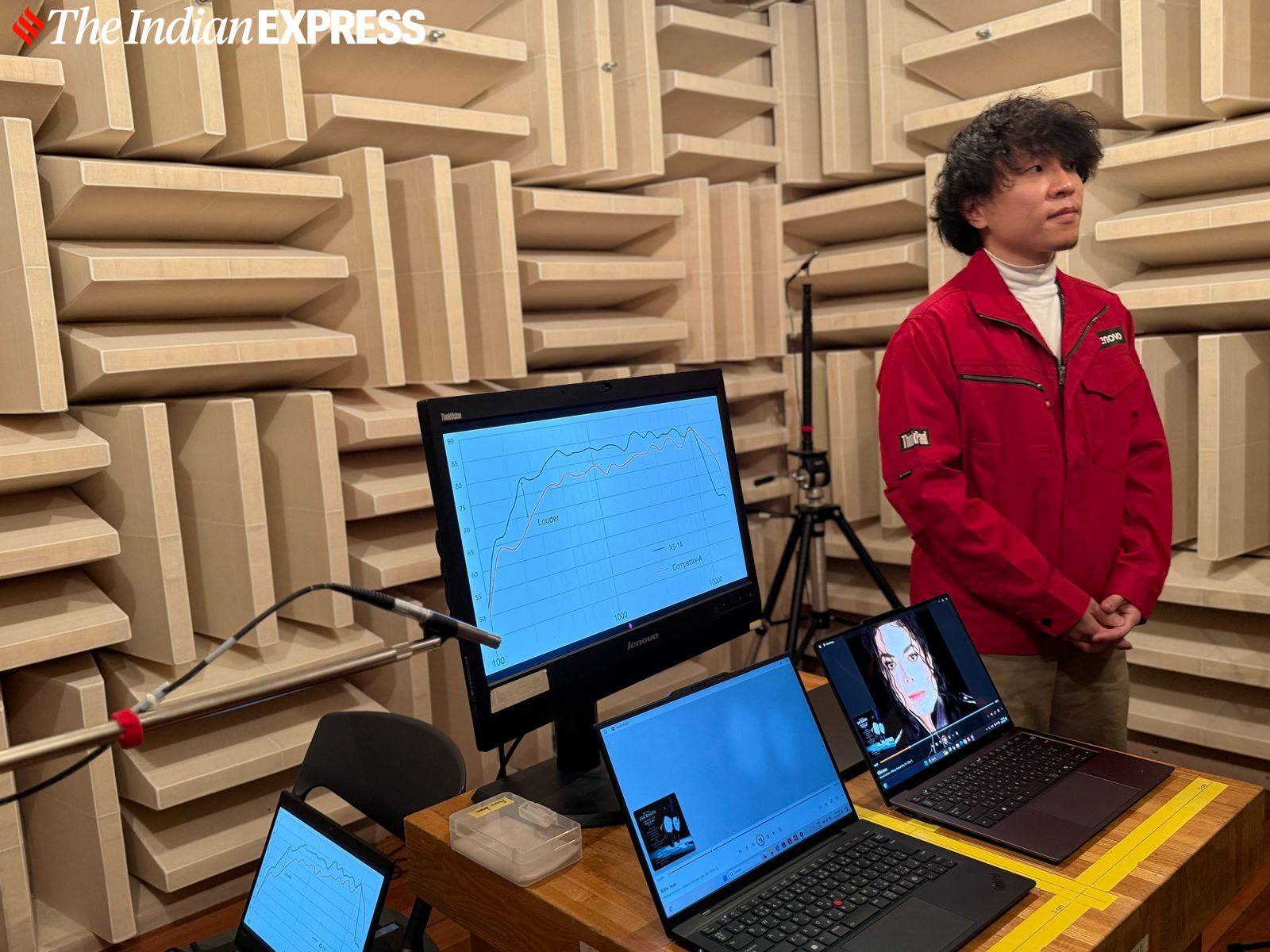 A ThinkPad is tested in an acoustic chamber in a hemi-anechoic chamber using high-quality microphones in several different scenarios. (Image credit: Anuj Bhatia/Indian Express)
A ThinkPad is tested in an acoustic chamber in a hemi-anechoic chamber using high-quality microphones in several different scenarios. (Image credit: Anuj Bhatia/Indian Express)
“The X1 Carbon is a drastic change for us because we are really looking to acquire a new type of customer. That’s why we designed it with a very different approach,” Yasumichi Tsukamoto, Vice-President of Commercial Product Solutions Development at Lenovo’s Commercial Product Center, Intelligent Devices Group (WW), told indianexpress.com in an exclusive interview. “We don’t make big changes all at once, but sometimes we try something new as we did on the X1 first, see the customer feedback, and if it works, we apply it to other products.”
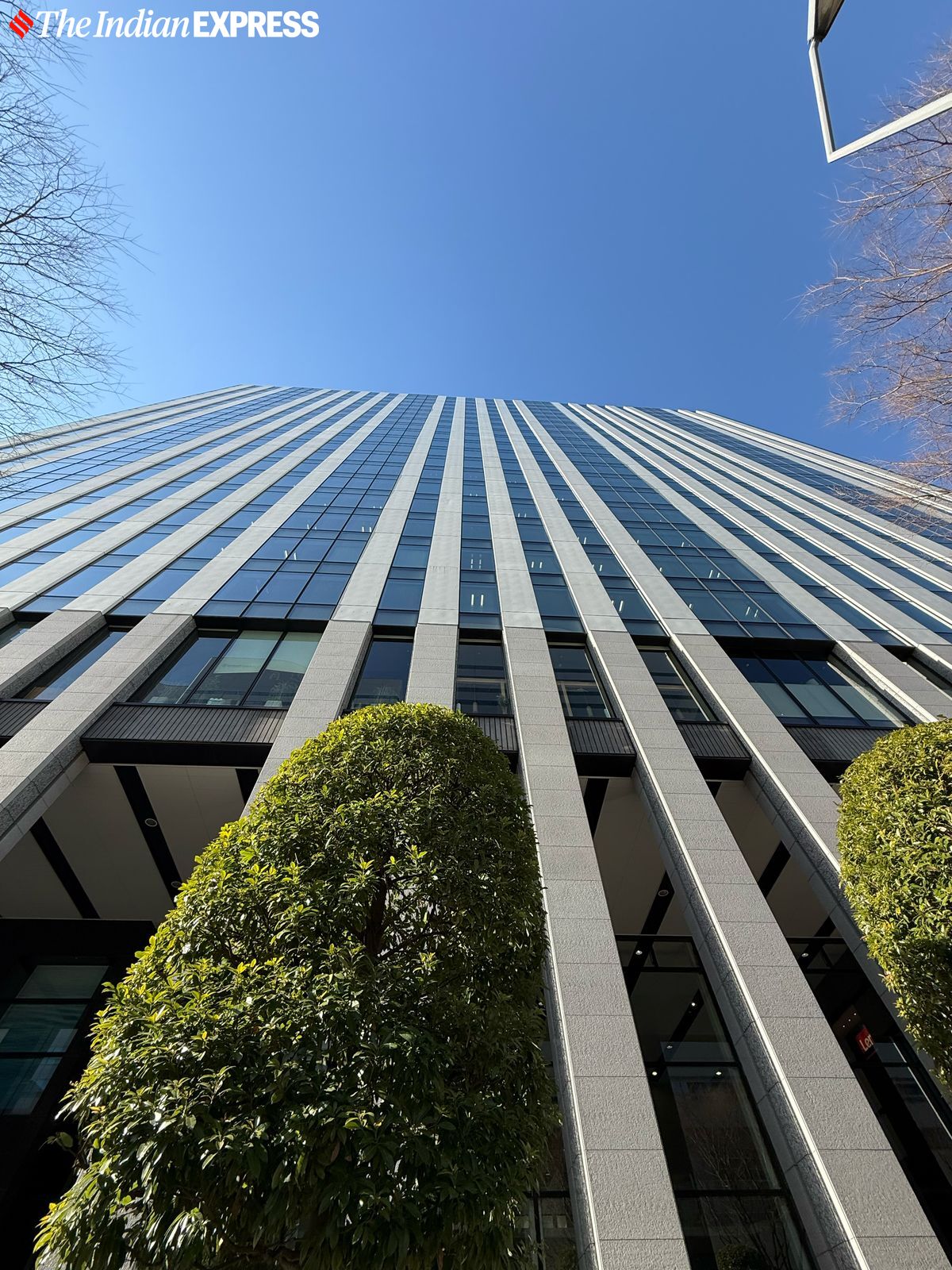 Lenovo’s Yamato Lab in Yokohama, Japan. (Image credit: Anuj Bhatia/Indian Express)
Lenovo’s Yamato Lab in Yokohama, Japan. (Image credit: Anuj Bhatia/Indian Express)
A graduate of the School of Engineering at the University of Tokyo, specialising in Information Engineering and CPU Architecture, Tsukamoto joined IBM in 2002, starting his career as an electrical engineer in the in-house development of the ThinkPad T series. He joined Lenovo Japan in 2005.
“We can be conservative for traditional users, but we need to continue evolving to drive new innovation. We always discuss industry trends, customer feedback, and changing preferences from generation to generation,” he said. Tsukamoto’s team looks at past ThinkPad computers and design language to incorporate them into newer products. “When people see this PC (X1 Carbon), they will instantly recognise it—the ThinkPad logo with a red dot, the simple and classic design that ThinkPads are known for.”
Story continues below this ad
While the ThinkPad X1 Carbon has retained most of its classic design traits, Lenovo is also experimenting with a ThinkPad without its iconic TrackPoint nub. The TrackPoint debuted with the IBM ThinkPad 700, which launched in 1992, and has since been a staple of IBM and Lenovo ThinkPad laptops. Throughout history, the TrackPoint (that little red nub in the middle of the keyboard used to control the mouse cursor) has helped distinguish the ThinkPad from the plethora of laptops from other brands. However, you won’t see it on some of the 14- and 15-inch ThinkPad X9 Aura Editions.
“A TrackPoint needs some additional space, which can potentially make the system a bit thicker. That’s a side effect, and as engineers, we are trying to minimise it. Many customers love it, and we continue to offer the TrackPoint on select X-line notebooks, but not all customers use it—many prefer touch buttons instead,” Tsukamoto explained, when asked why the company decided to drop the TrackPoint from certain ThinkPads. This shows that the ThinkPad is evolving with the times.
Unique aesthetics of the ThinkPad
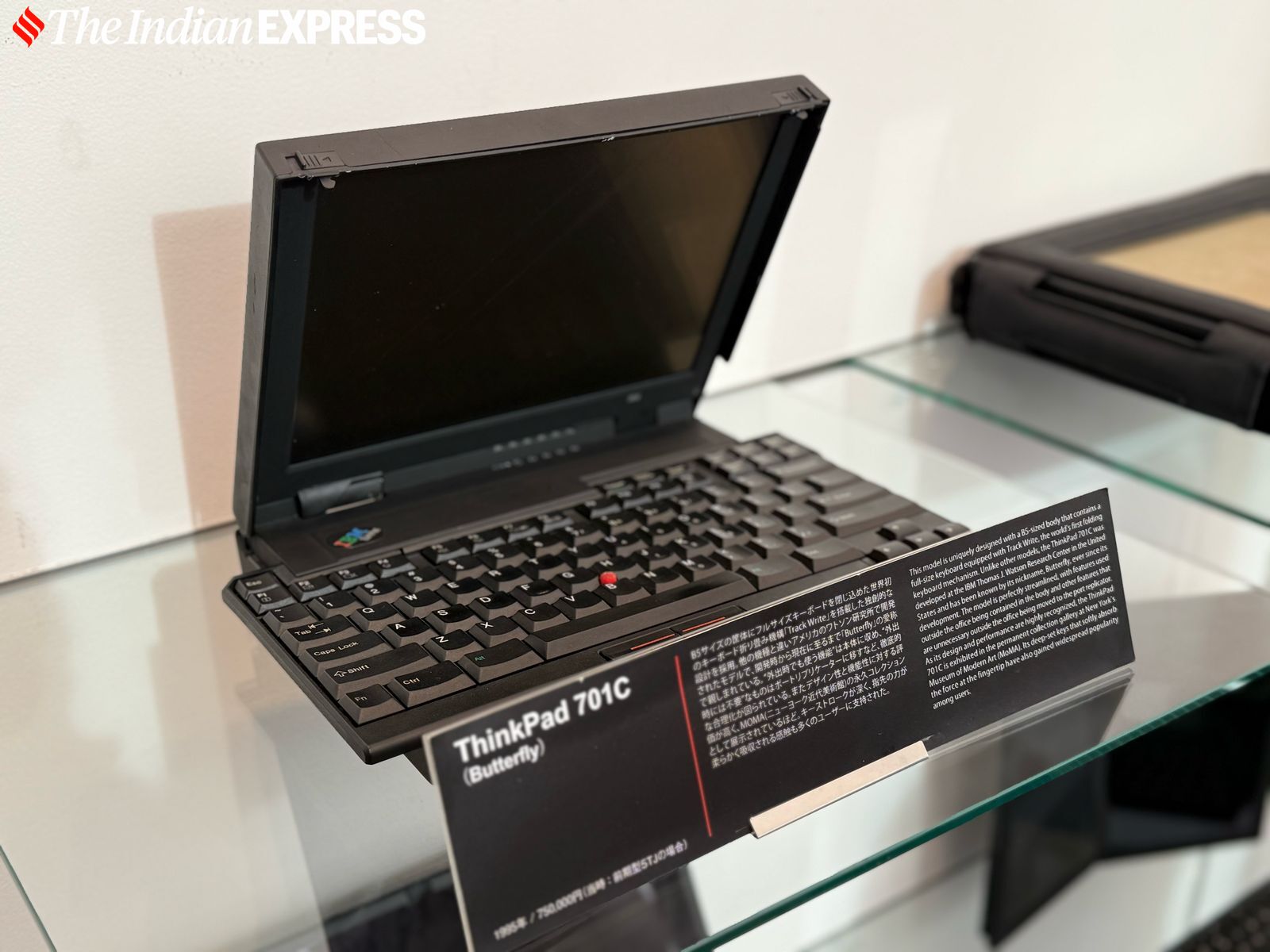 The ThinkPad 701C, featuring the iconic “butterfly keyboard,” utilised an ingenious mechanism to provide a larger keyboard without increasing the laptop’s overall size. The notebook is a part of the permanent collection at the museum in Yamato Lab. (Image credit: Anuj Bhatia/Indian Express)
The ThinkPad 701C, featuring the iconic “butterfly keyboard,” utilised an ingenious mechanism to provide a larger keyboard without increasing the laptop’s overall size. The notebook is a part of the permanent collection at the museum in Yamato Lab. (Image credit: Anuj Bhatia/Indian Express)
Over the decades, as ThinkPads grew in popularity, they eventually became the ultimate business laptop for CEOs and executives. ThinkPads have a distinct aesthetic, offering a premium build with a tactile experience when holding or opening the laptop. The X1 Carbon is made from premium materials like magnesium and carbon fiber, maintaining a lightweight feel while ensuring the reassuring sturdiness they are known for.
A ThinkPad’s size is part of its allure, says Tsukamoto. “Previously, we offered ThinkPads in 11-inch, 12-inch, 15-inch, and even 16-inch sizes, but we found that 14 inches is the sweet spot. That’s where our volume is actually the biggest, because customers love it. The 14-inch size also allows us to offer a full keyboard, whereas going down to 13 inches or less would have resulted in a compromised keyboard layout,” he said.
Story continues below this ad
 A view of Yokohama City, which is a 30-minute drive from Tokyo’s Haneda Airport. (Image credit: Anuj Bhatia/Indian Express)
A view of Yokohama City, which is a 30-minute drive from Tokyo’s Haneda Airport. (Image credit: Anuj Bhatia/Indian Express)
“In Japan, for example, many people still prefer 13-inch laptops because they need to commute and fit their computers into their backpacks while traveling by train. They need to maximise space. However, even in Japan, as more people work from home and prioritise productivity, they have realised that a 14-inch notebook is more effective. Going back to a 13-inch size would feel too small for their needs,” he explained, highlighting why mainstream miniature business laptops are no longer as common as they once were back in the day.
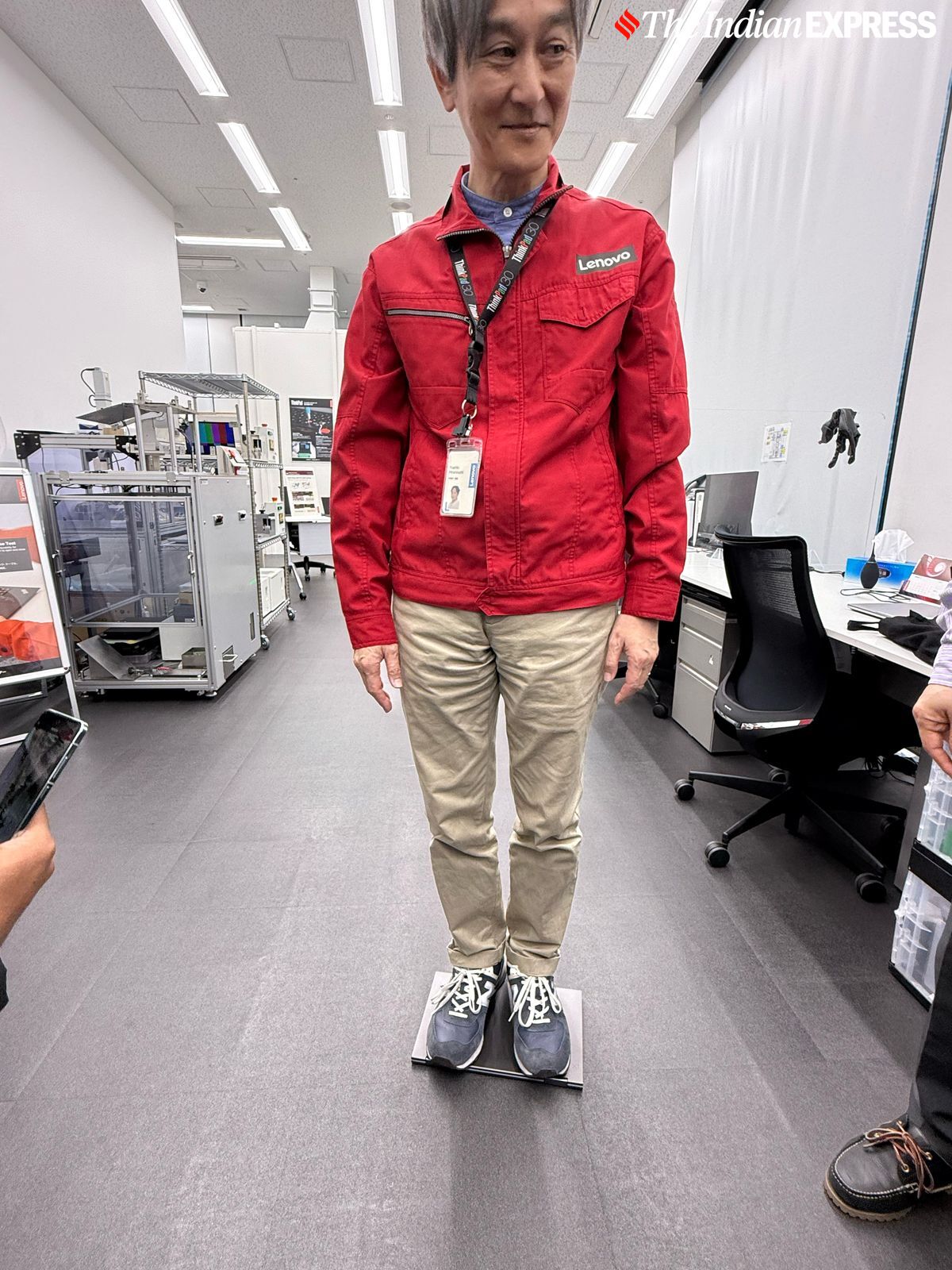 Lenovo tests these machines in such a way that a large man could stand on the X1 Carbon and it will still work just fine afterwards. (Image credit: Anuj Bhatia/Indian Express)
Lenovo tests these machines in such a way that a large man could stand on the X1 Carbon and it will still work just fine afterwards. (Image credit: Anuj Bhatia/Indian Express)
Each ThinkPad goes through rigorous testing before it finally ships to consumers. Lenovo’s Yamato Lab is not only a center for design but also a facility for testing the durability of new laptops under a range of conditions. The company conducts a series of tests in different environments, including extreme heat and humidity. These tests partially emulate different real-world conditions, subjecting the devices to intense stress to demonstrate their ruggedness. Whether it’s a free-fall drop from about 5 feet or a direct impact to the corner of the chassis, ThinkPads are built to last long.
“As part of quality, I don’t want customers to worry about their PC—whether they put a ThinkPad in a backpack or throw it into a car,” Tsukamoto said. Asked whether the company considers people’s use cases, such as the bags they carry or whether they travel by car or train, he added, “You don’t buy it; the company buys it. The durability is good enough for any system.”
Customer mindsets are changing
 A ThinkPad is going through a pressure test to ensure that it will still perform. (Image credit: Anuj Bhatia/Indian Express)
A ThinkPad is going through a pressure test to ensure that it will still perform. (Image credit: Anuj Bhatia/Indian Express)
Tsukamoto observes that more customers now want a thin and light notebook, making it a universal trend. He points out that to make the ThinkPad X1 Carbon (Gen 13, Aura Edition) weigh under 1kg and measure just 14.37mm thin, the company had to implement significant design changes—and it shows. “I am seeing a trend where even US customers are starting to say, ‘Yeah, lightweight is good.’ “American customers never used to care about weight because they drive and don’t have to carry their laptops around. But customer mindsets are changing.”
Story continues below this ad
But one thing that hasn’t changed with ThinkPad laptops over the years is that they remain devoid of colours. They are premium business laptops—flagships of the ThinkPad line. The X1 Carbon, in particular, represents the best in the industry but comes only in black—the sole colour used for these iconic machines since the beginning of ThinkPad’s history.
“If you offer multiple colours in the same series, it adds complexity for IT departments that need to repair or refurbish the laptops. If an IT department needs to buy a replacement unit or replace a broken part, they would have to stock multiple colours, which creates additional challenges for them,” he explained. However, it is worth noting that the black colour scheme also gives the ThinkPad a distinct identity and makes it one of the most recognisable features of the lineup.
Time for experimentation
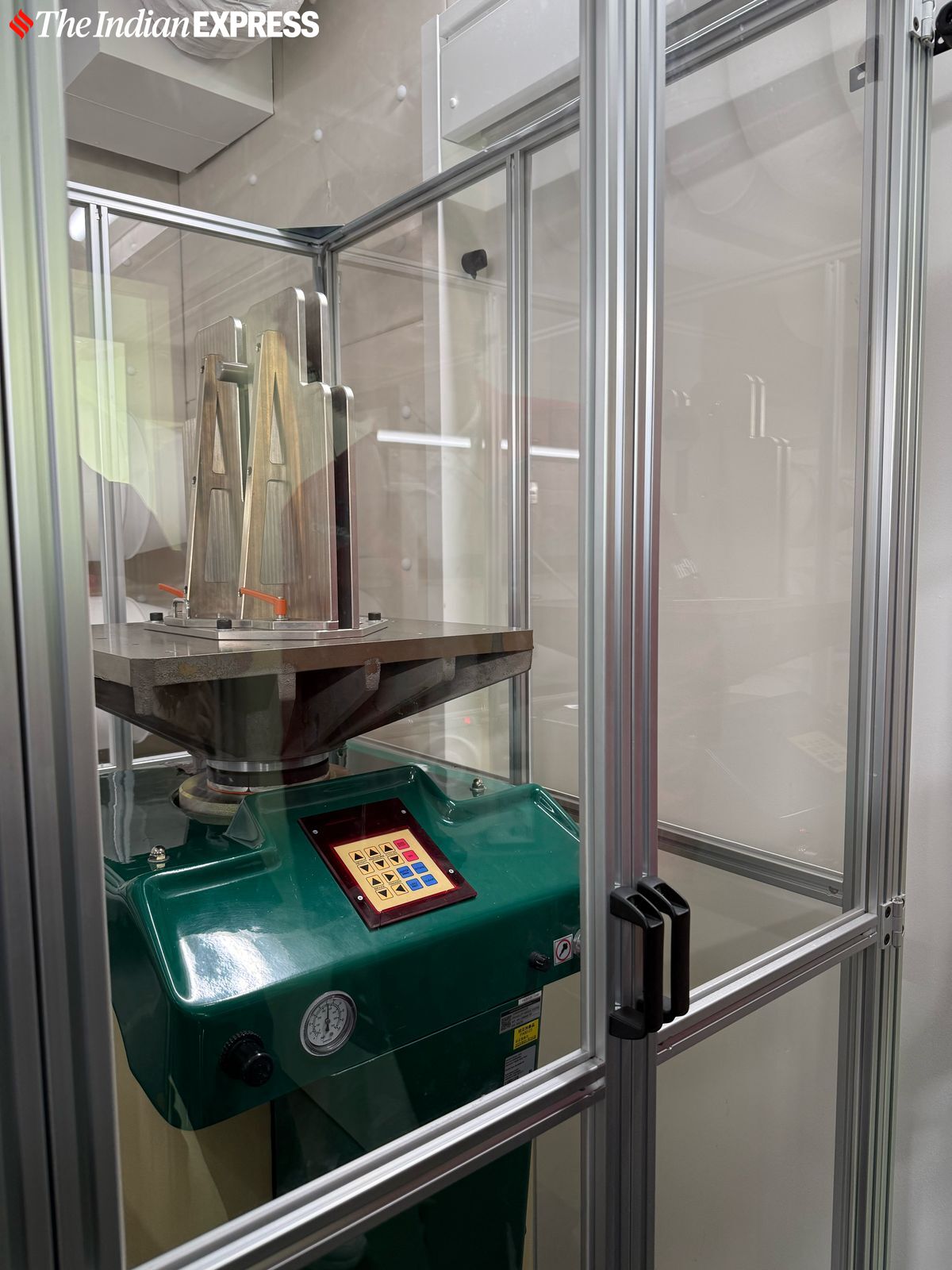 A ThinkPad goes through multiple tests, including repeated opening and closing tests, rotation tests, and distortion tests. (Image credit: Anuj Bhatia/Indian Express)
A ThinkPad goes through multiple tests, including repeated opening and closing tests, rotation tests, and distortion tests. (Image credit: Anuj Bhatia/Indian Express)
But as regulations are getting stricter, Tsukamoto said it is pushing the company to come up with new ideas, setting the ThinkPad on a path of experimentation. “Engineers need to do more to meet those requirements. But you know, that’s exactly what engineers do,” he said, adding that the company had already adopted repairable designs even before the EU regulations took effect. “We are always looking for ways to meet these new requirements without adding extra costs. This is the challenge we are taking on now.”
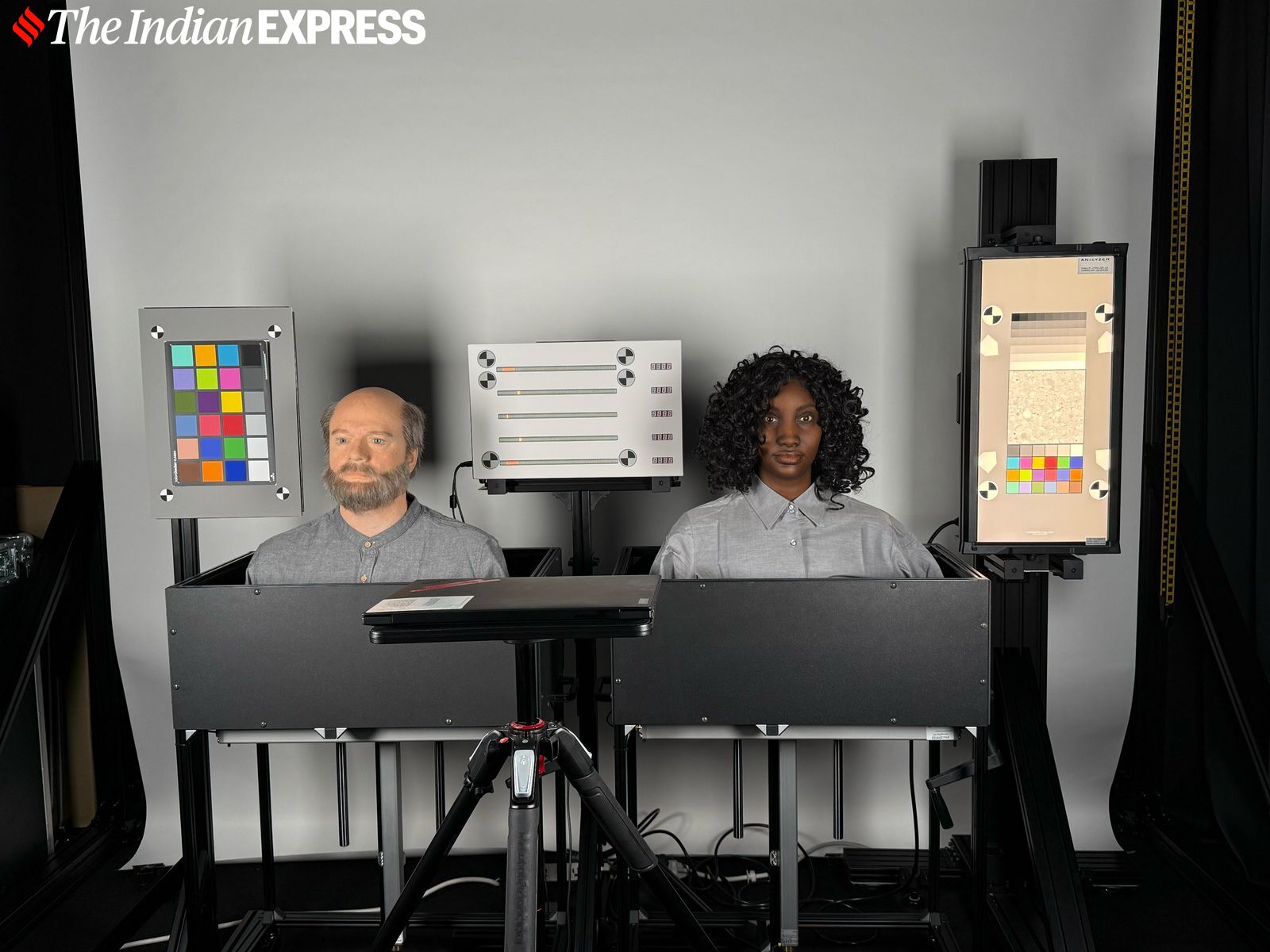 In the camera design test lab, Lenovo engineers reproduce various environments to test front cameras.(Image credit: Anuj Bhatia/Indian Express)
In the camera design test lab, Lenovo engineers reproduce various environments to test front cameras.(Image credit: Anuj Bhatia/Indian Express)
For years, the ThinkPad brand has stood the test of time and remained relevant. If you look at its history, many industry firsts were introduced on these machines—including the first colour TFT display, built-in CD-ROM/DVD-ROM drives, Wi-Fi, fingerprint readers, foldable screen, and a rollable display. As Tsukamoto said, it’s time to “modernise” ThinkPad, especially in the face of GenAI.
Story continues below this ad
“AI requires significantly more power for potential background tasks and concurrent operations to assist users in real-time, and we need to prepare well for that. As engineers, we need to pay closer attention to thermal design because managing power efficiently is crucial. It involves optimising computing resources like the CPU, GPU, NPU, memory, and access to storage for language models,” he explained.
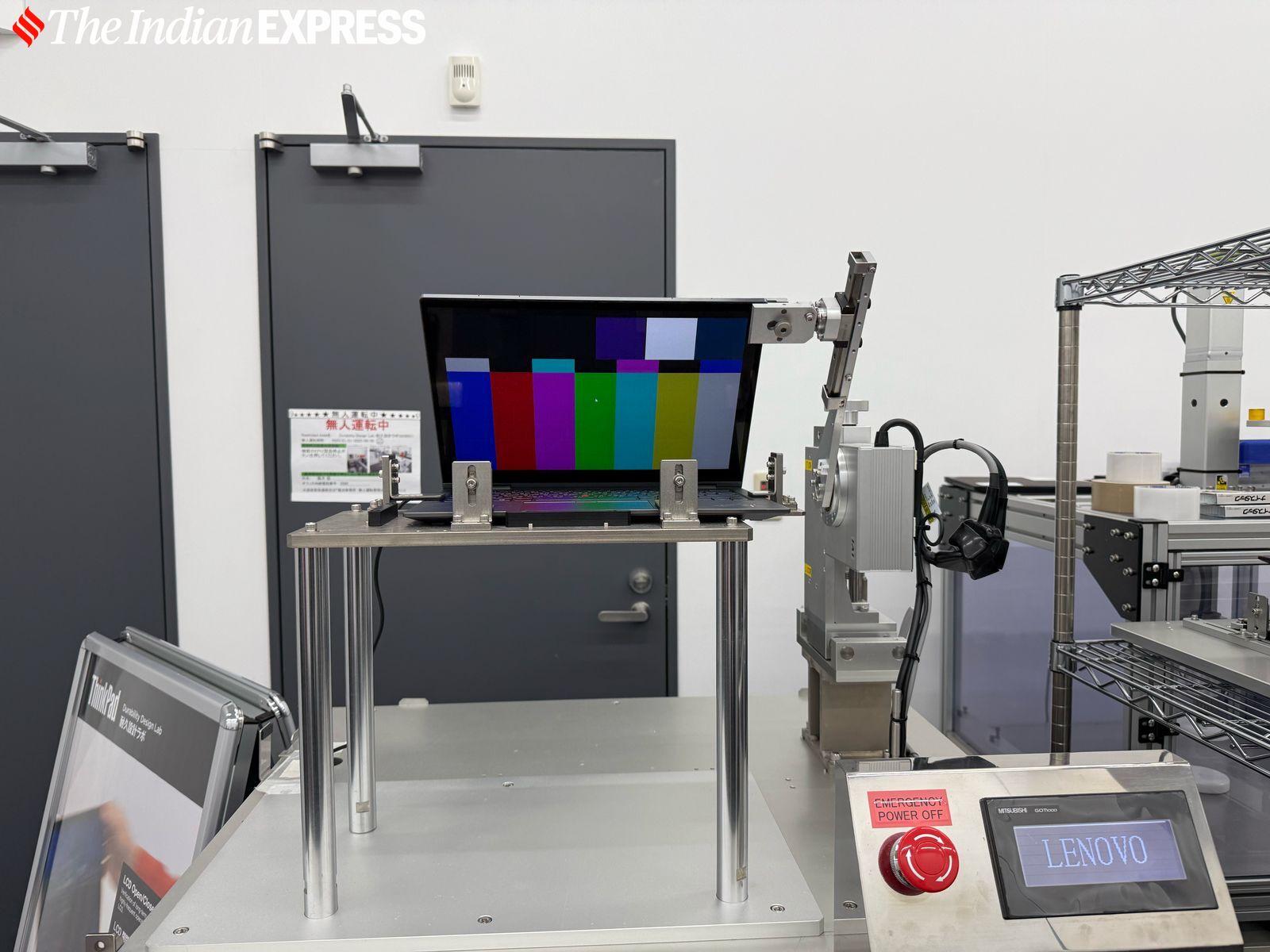 The ThinkPads are abused and go through extensive tests at the Yamato Lab. (Image credit: Anuj Bhatia/Indian Express)
The ThinkPads are abused and go through extensive tests at the Yamato Lab. (Image credit: Anuj Bhatia/Indian Express)
Tsukamoto added that good design isn’t just about how a computer looks on the outside but also about what’s inside. “We really need to pay attention to thermal management and power consumption to make devices more energy efficient. The goal is to demonstrate a new user experience,” he said, highlighting how the Aura Edition notebooks differ from non-AI PCs.



